Picture Stockton... Sciences Up Close
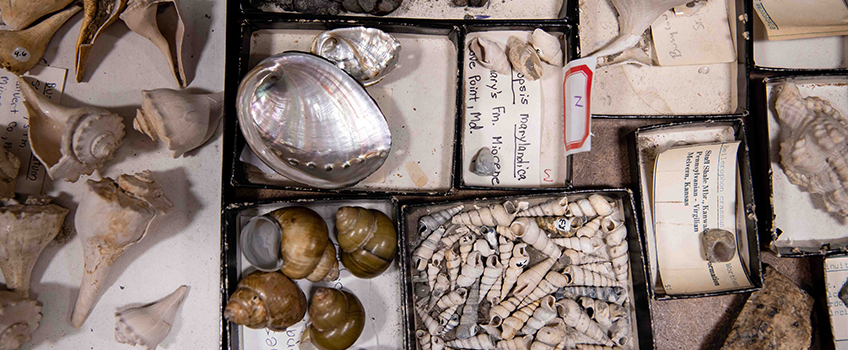
Galloway, N.J. - When the lights go off, chemistry experiments glow. At nearly 30,000mm, a telescope brings the details on the surface of the moon into focus. Fossils, cast replicas, rock samples, taxidermy specimens and pinned insects fill shelves and drawers with a museum of natural history that goes on display for classroom and lab presentations.
This photo series brings viewers macro and telephoto views of the sciences at Stockton University.
The Paleontology, Geology, Entomology and Ornithology collections share stories from centuries ago, offer students the chance to explore how animals evolved, offer clues from the fossil record and put specimens into students' hands for close-up observation.
Take a look at the collections and the science that happens inside the labs.
Photos and story by Susan Allen








The entomology collection is filled with butterflies, moths, beetles and other stunning insects.


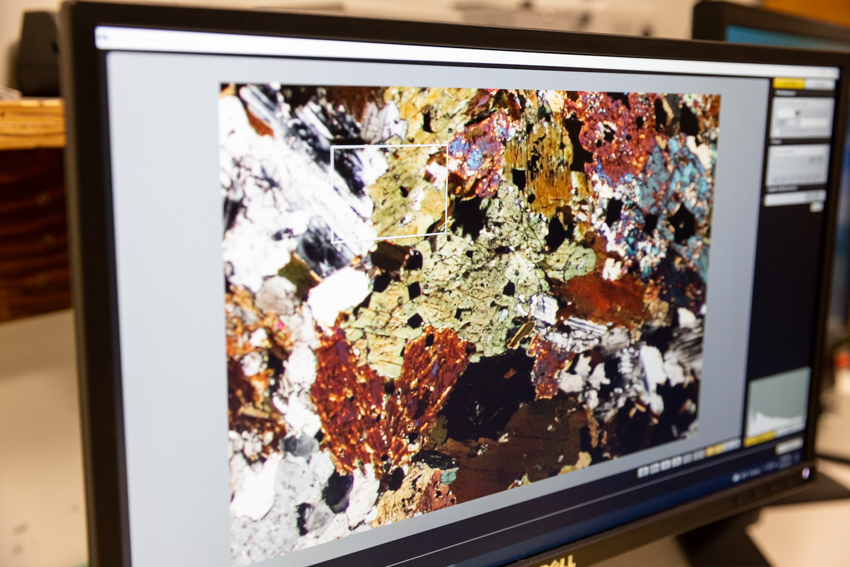




The first image shows a wavellite mineral from Arkansas that is one of many diverse rocks in the geology collection. Students get to look at the mineral composition of rock samples when they put thin sections under the microscope. One chunk of rock (photo 6) contains crinoid stems, which are the stalks of ancient sea lilies (they resemble a short stack of pancakes).
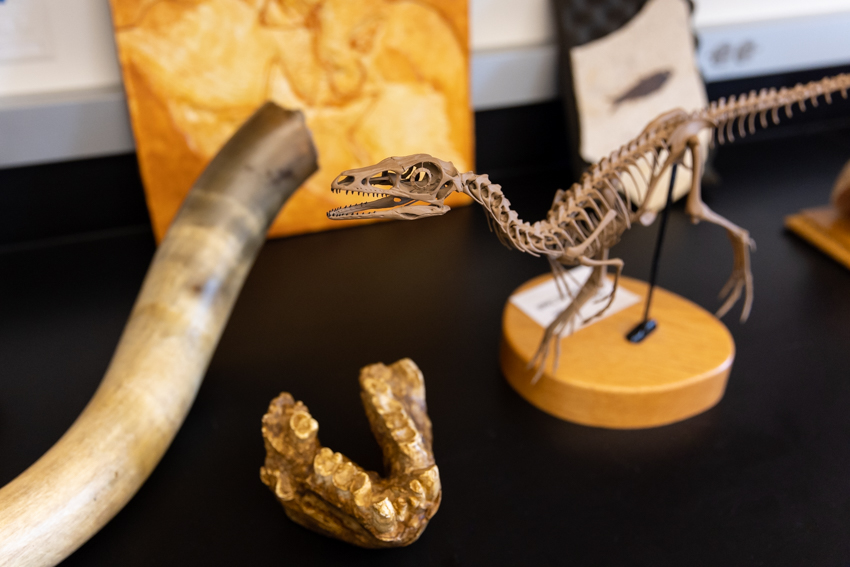

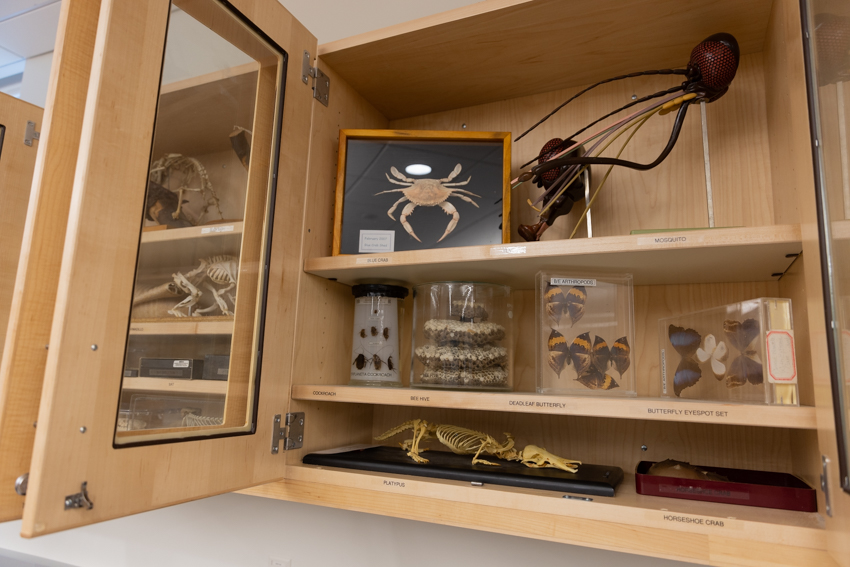


The paleontology collection contains both fossils and cast replicas. Margaret Lewis, professor of Biology and president of the Society of Vertebrate Paleontology, has been interviewed by various media outlets on the issue of rare fossils belonging in public spaces rather than private collections. Hundreds of paper boxes filled with shells, marine life fossils and casts give students a look into the distant past when the ocean submerged much of North America.
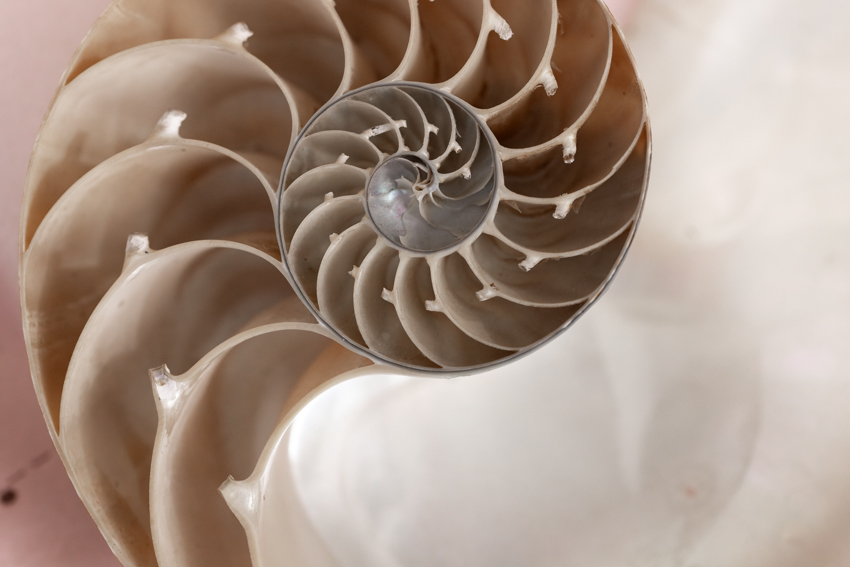
The nautilus, a mollusk that is a distant relative of the octopus, has chambered compartments inside its shell that can store water that it pulls in and expels while moving up and down the water column.
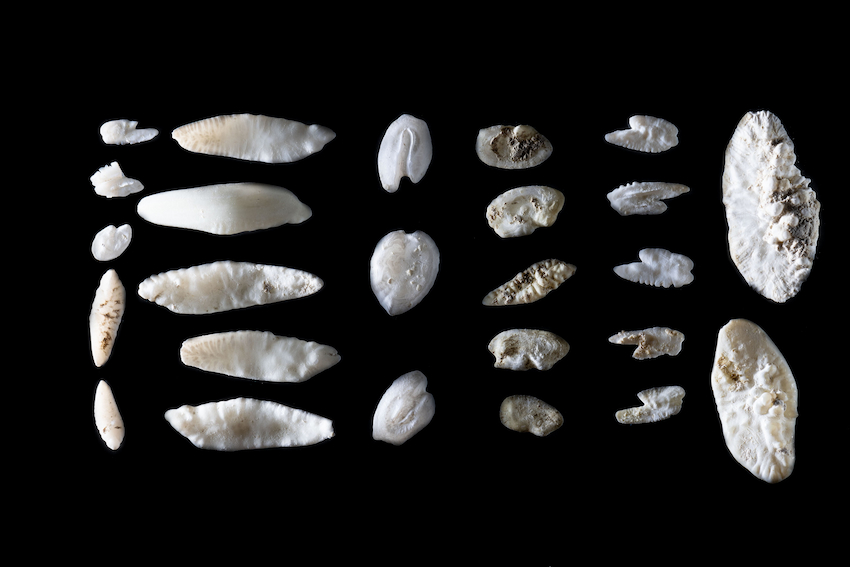
These otoliths, or fish ear bones, were extracted from Harbor seal scat (excrement) collected along Great Bay. Marine mammal biologist Jackie Toth Sullivan, an adjunct faculty member, studies these bones to determine what seals are feeding on. The species represented in this picture are cod, hake, windowpane flounder and herring.




The ornithology collection contains a diversity of local species that have been preserved as taxidermy specimens. Although these birds died from window strikes, natural causes, car hits and other injuries, they live on as study skins that give students the chance to observe them up close. Biology professors Mark and Martha Pokras, who operated the Avian Rehabilitation Center in the 1970s, created taxidermy specimens from patients that didn't survive, which started the ornithology collection. Many of the study skins were created by Stockton graduate and wildlife artist Fred Hamer, who taught John Rokita, assistant supervisor of academic lab services, when they were students at Stockton. Donated specimens include the extinct passenger pigeon. The spiral arrangement illustrates the variety of sizes and species of birds that strike windows on campus.
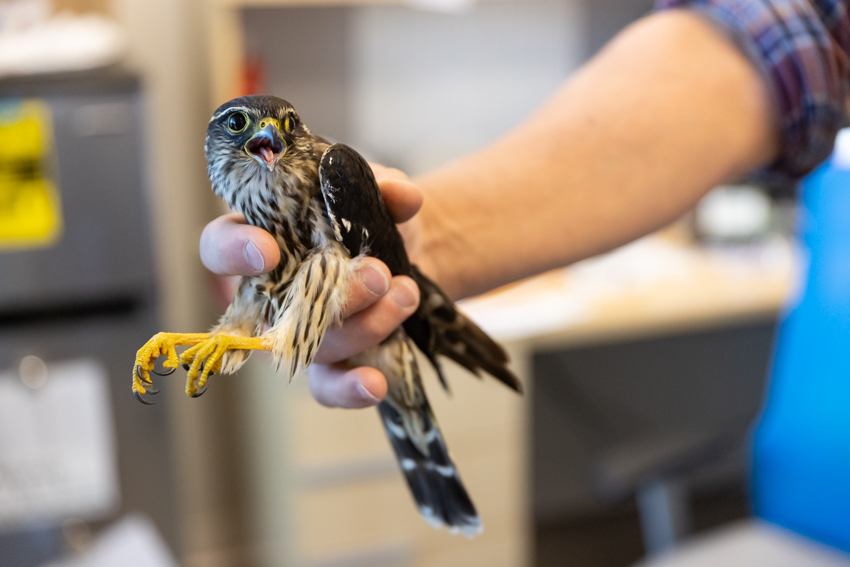
Luckily, not all birds injured on campus end up in the ornithology collection. During fall migration in 2022, a Merlin falcon was found on the ground next to chicken wire fencing that it likely flew into while passing through the Arboretum. John Rokita assessed the injured bird in the vivarium. Rokita is a trained rehabilitator and gets calls every year during migration to make rescues.
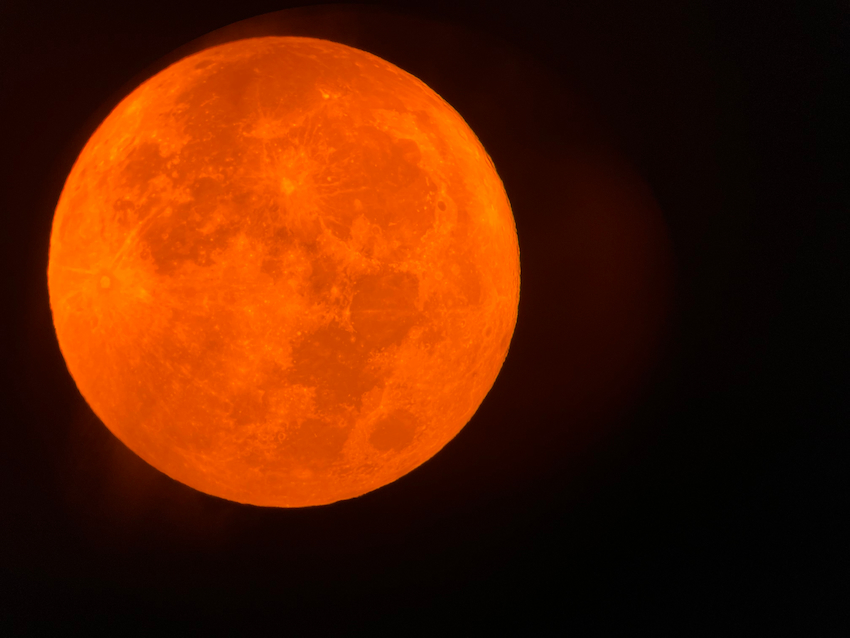
The telescope at the Harold E. Taylor Observatory, located off Pomona Road, brings viewers closer to outer space for views of the moon, planets and galaxies. Visit the website for public viewing hours, which are dependent on clear skies. Photo: Joseph Trout, professor of Physics
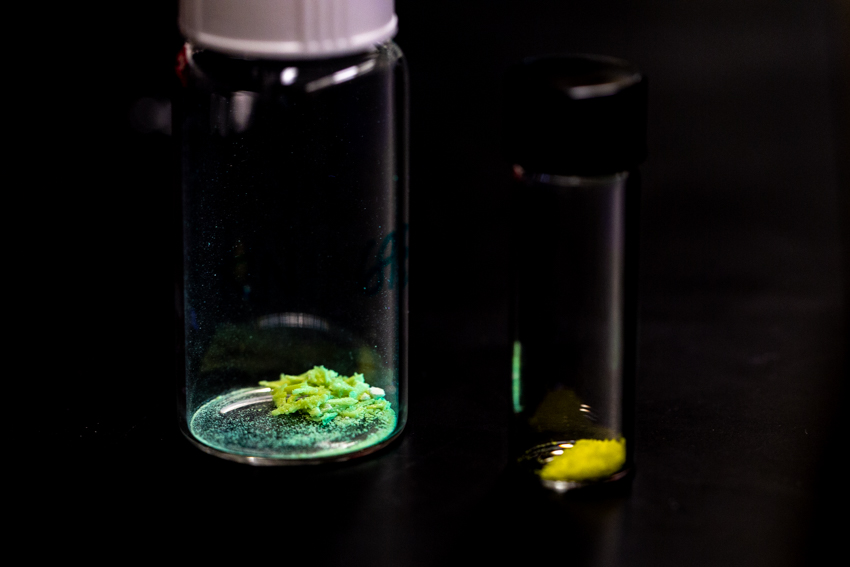
Wooseok Ki, associate professor of Chemistry, looks for alternatives to rare earth elements that can be used to synthesize the phosphors that illuminate organic LEDs, which are used to light digital displays and indicator lights. Pictured is a tin fluorine phosphor that glows bright green. A UV lamp shines over the phosphors to illuminate the glowing property.
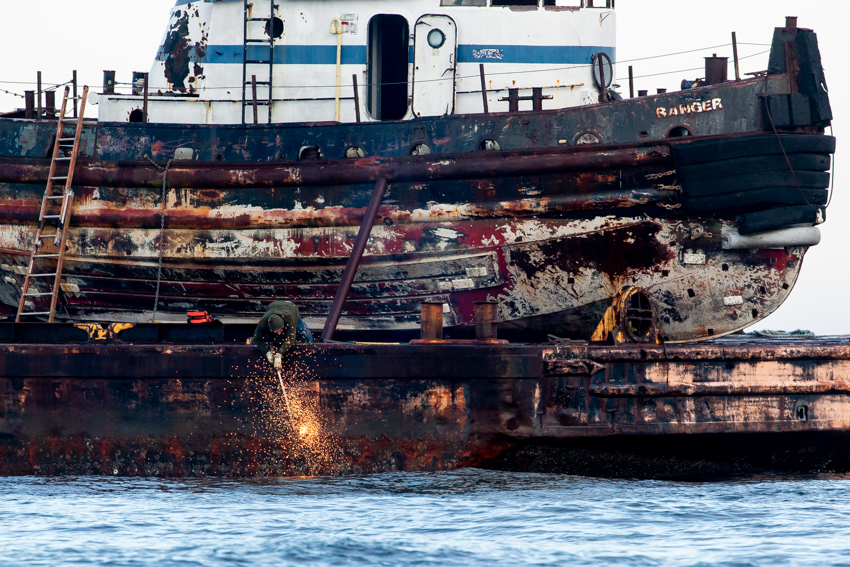
This telephoto view captured from the bow of the R/V Petrel shows the intentional sinking of a barge and the boat it's carrying for the creation of an artificial reef off Long Beach Island. Researchers are studying the ecological succession of this new habitat with Stockton's Marine Field Station.
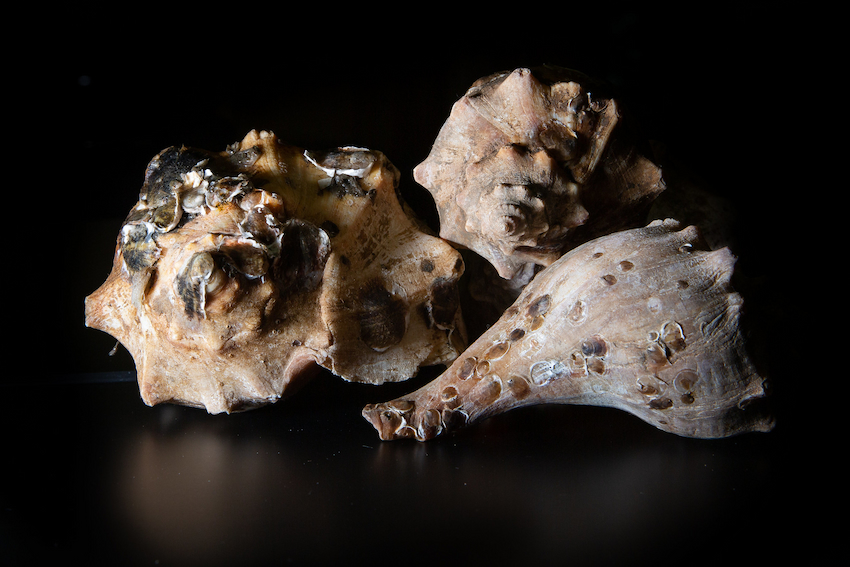
The flaky spots growing on these whelk shells are baby oysters (spat). Christine Thompson, associate professor of Marine Science, works with the Stockton Marine Field Station to monitor oyster growth and survival at restoration sites in our local bays.


